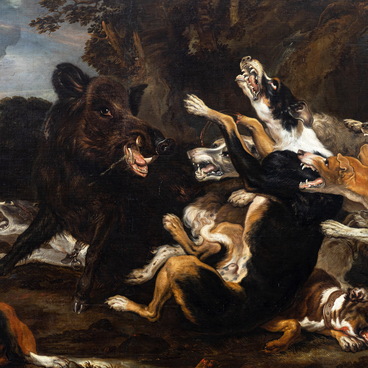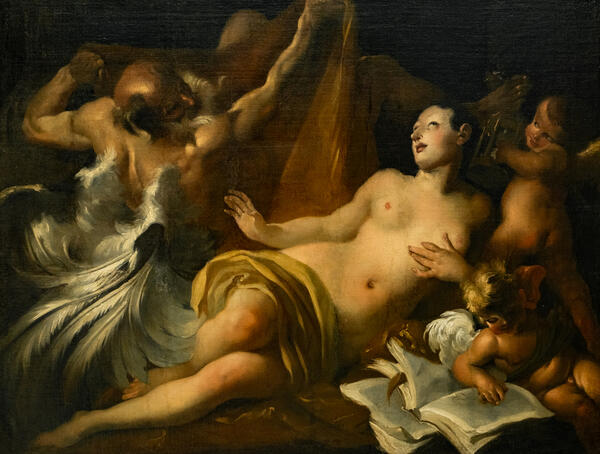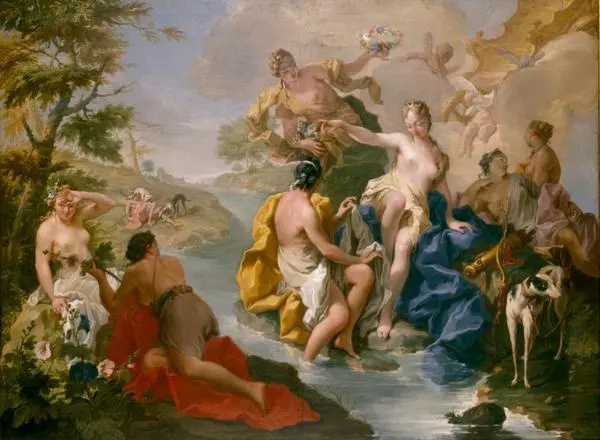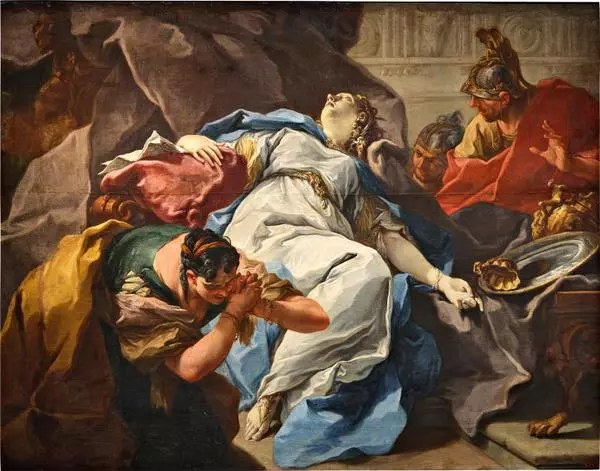Giovanni Battista Pittoni was one of the greatest painters of the Italian Baroque, a master of frescoes, and the last major representative of the Venetian school. Born at the end of the 17th century on the banks of the Grand Canal, he was trained by his uncle, the artist Francesco Pittoni, and began to work in collaboration with him. He is known as the creator of religious, mythological and historical paintings. He was one of the founders of the Accademia Gallery, the largest art museum in Venice. Pittoni was its president for several years.
The artist did not travel much and almost never left his hometown, yet he worked for Swedish, Austrian, and German high-ranking customers and was a sought-after painter at European royal courts.
The painting “Saint Elisabeth” features Elisabeth of Hungary (Thuringia). This princess of the Árpád dynasty, a landgravine who belonged to the Franciscan monastic order, lived only 24 years. As royalty, she founded hospitals and organized food distributions to the hungry. Besides doing charity work, Elisabeth showed a penchant for asceticism. After her husband’s death, the princess lost her wealth and lived in destitution. Eventually she renounced her family and followed her confessor to Marburg. There she gave away to the poor everything she earned from spinning. Four years after her death, Elisabeth was beatified as a saint.
Pettoni is characterized by a certain liberty: depicting the poor and beggars with gracefully elongated proportions and heroic gestures, he somewhat embellishes the facts of life and, instead of the prose of reality, focuses on his own “rococo vision”. The princess practicing the virtue of charity, the little children holding bowls with bread, the beggars waiting for alms, and the angels balancing on a cloud are all rendered by the artist in warm tones, with pearlescent colors and characterized by shimmering beauty and a pulsating rhythm.
The light, elevated tone of Pittoni’s painting, his penchant for pink and blue colors, the fluency and sharpness of his brushstrokes make his style lively and flashy. The artist’s work was highly appreciated by his contemporaries. There are facts indicating that Pittoni more than once entered into competition with his famous namesake — Giovanni Battista Tiepolo.
The artist did not travel much and almost never left his hometown, yet he worked for Swedish, Austrian, and German high-ranking customers and was a sought-after painter at European royal courts.
The painting “Saint Elisabeth” features Elisabeth of Hungary (Thuringia). This princess of the Árpád dynasty, a landgravine who belonged to the Franciscan monastic order, lived only 24 years. As royalty, she founded hospitals and organized food distributions to the hungry. Besides doing charity work, Elisabeth showed a penchant for asceticism. After her husband’s death, the princess lost her wealth and lived in destitution. Eventually she renounced her family and followed her confessor to Marburg. There she gave away to the poor everything she earned from spinning. Four years after her death, Elisabeth was beatified as a saint.
Pettoni is characterized by a certain liberty: depicting the poor and beggars with gracefully elongated proportions and heroic gestures, he somewhat embellishes the facts of life and, instead of the prose of reality, focuses on his own “rococo vision”. The princess practicing the virtue of charity, the little children holding bowls with bread, the beggars waiting for alms, and the angels balancing on a cloud are all rendered by the artist in warm tones, with pearlescent colors and characterized by shimmering beauty and a pulsating rhythm.
The light, elevated tone of Pittoni’s painting, his penchant for pink and blue colors, the fluency and sharpness of his brushstrokes make his style lively and flashy. The artist’s work was highly appreciated by his contemporaries. There are facts indicating that Pittoni more than once entered into competition with his famous namesake — Giovanni Battista Tiepolo.






